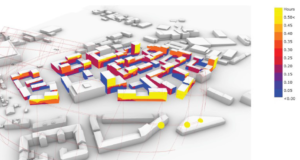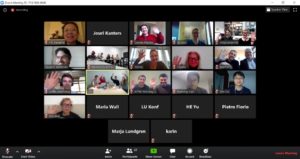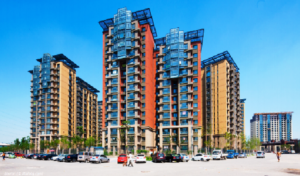Case study reporting by research platform Solar Energy in Urban Planning has recently concluded with the publication of an interactive map showing 34 case studies altogether. They demonstrate that solar energy can be integrated successfully into new and existing urban areas. The colours on the map classify showcases by the environment in which they are found. Orange denotes existing and blue new urban areas. Green indicates that a solar system has been incorporated into the landscape. A downloadable multi-page flyer is available for each of the sites. As property owners, planners and municipalities still require help with challenging urban solar projects, the IEA’s Solar Heating and Cooling Programme, or IEA SHC, is planning to launch a new research platform titled Solar Neighbourhood Planning.
Source: IEA SHC
Maria Wall, Professor at the Energy and Building Design department of Lund University in Sweden, is inviting researchers from pertinent disciplines, such as architecture, energy management and urban as well as spatial planning, to attend an initial Task Definition Workshop, which will be held in Lund on 23 and 24 October 2018. The 1.5-day event will present an opportunity to discuss crucial aspects of neighbourhood planning and the structure of the new global research initiative. It will take place at the study centre of Lund University’s Faculty of Engineering. Please contact Maria Wall if you would like to receive more information about the workshop (see contact details below).
“Our aim is to identify and develop long-term planning strategies and concepts for increased solar energy use in neighbourhoods, for example, by means of active solar thermal, PV, passive solar and daylighting,” Wall said about the new research platform.
Neighbourhoods have been defined as a group of buildings – or a smaller district or precinct – within a specified geographical area where Premises may provide a variety of services and functions. During Task 51, Wall and her team identified a number of key issues that the new task will need to follow up on. A few examples:
- A Right to Light needs to be secured. Municipal authorities must be made aware of the need for legal reform to protect access to solar energy and daylight for many years to come – an essential criterion for property investment.
- Tools are needed to support decision-making at city district level. There is a tentative plan to improve existing methods and tools and offer workshops on how to use them.
- Several concepts and examples of net zero-energy and plus-energy neighbourhoods require further study and development. There is also a need for market strategies and stakeholder engagement, which is why the members of the task aim to devise new business models that consider values such as quality of life and work instead of focusing on finance alone.
Solar Neighbourhood Planning caters to a wide range of professionals, such as developers, property owners, architects, local authorities, municipalities, urban planners, heritage specialists, financial and energy consultants, tool developers and utility companies. The task is scheduled for approval during the IEA SHC’s executive committee meeting in June 2019 and is to run for four years until 2023.
More information
To attend the task definition workshop Solar Neighbourhood Planning on 23 and 24 October, please contact Professor Maria Wall at
maria.wall@ebd.lth.se



